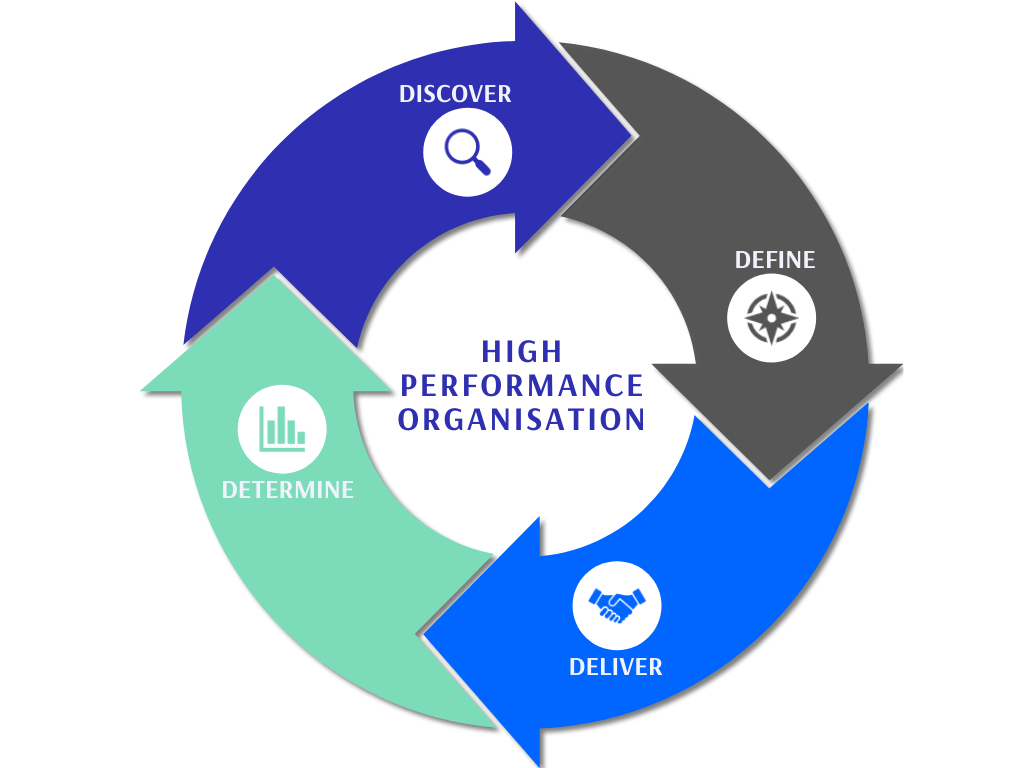Why & how design thinking drives the DE&I agenda forward

Sign up to receive the latest insights
Achieving the desired environment for diversity, equity and inclusion is a tricky path to traverse. An already difficult task is further exacerbated by ever-changing approaches that differ from organisation to organisation - no two have the same resources, support and vision.
Best practices and policies in this area are often unsuccessful - current DE&I outcomes can be insufficient and sluggish, with success often fleeting and inadequate. This isn’t to say that the processes we use today are obsolete, but they do need bolstering with something better that drives real and lasting change.
To achieve this, we need a future-proof solution that sets aside the traditional assumptions and looks at tackling the DE&I agenda with a more innovative, involved approach. I believe that we can uncover powerful solutions via the process of design thinking.
What do we mean by design thinking?
Design thinking is a systematic approach to problem-solving. It’s an iterative, strategic and practical process used to understand a problem, challenge existing assumptions and redefine issues as a way of identifying alternative and potentially breakthrough solutions that wouldn’t otherwise be apparent.
In short, it’s a creative problem-solving technique that applies trial and error alongside a more human-centred philosophy. When it comes to something such as DE&I that demands compassion, fairness and forward-thinking, this approach, which asks ‘what does the user really want?,’ could be the winning technique.
However, in order to drive success and meet targets, testing and iterating must happen quickly. To ensure a streamlined and seamless process, Hanover has considered our own model based around the concept of design thinking and tailored to DE&I, which you can see below.
This approach has allowed us to position the client at the heart of the DE&I journey. We can empathise and define both challenges and strengths, collaborate with clients to develop tailored solutions that meet their and their employees’ needs, and continue to improve the impact.
We believe that this four-step approach which is grounded in design thinking can help us uncover unique, problem-oriented solutions that robustly drive the DE&I agenda forward over the long term.
By harnessing the capabilities of design thinking, I believe that businesses can propel themselves into a new era of improved DE&I and success. The Hanover approach to design thinking features the following four pillars:
- Discover - Gaining an understanding of the business and opportunities at leadership level to gain insights and drive value in DE&I; defining challenges and strengths.
- Define - Building a DE&I change plan, ensuring we have the right capabilities, and engaging stakeholders.
- Deliver - Implementing the change plan. This could involve talent acquisition, masterclasses and competency models, for example. This step allows room to collaborate with agility and develop solutions that meet clients’ needs and the needs of their employees.
- Determine - Conducting research to observe how much the plan has moved the needle of the DE&I agenda in your organisation and the value it’s brought overall. This last step in the process gives us a view of how successful we have been, not only so we can leverage those successes, but also continue to strengthen the process and outcomes.
The aim of this model is to take more of an iterative approach in the true nature of design thinking, making improvements and absorbing feedback and outcomes in an agile and responsive way that means the DE&I agenda becomes truly embedded within an organisation.
An integral element of this approach is accepting that we are constantly learning, and that vulnerability is ultimately an asset when it comes to making progress. Design thinking is a non-linear journey and requires multidisciplinary talent that is willing to engage with disruptive, effective ideas at a fast pace. Some of which won’t work, and that’s fine - the iterative process of design thinking means that ultimately you’ll find something that truly drives change for your organisation.
How does design thinking link to diversity and inclusion?
Design thinking demands a human-led approach and is centred around making things better for the end ‘user’. In the case of DE&I, this is both the employee and customer. For a human-centric issue, is there anything more suitable than an approach which carefully tailors solutions around the individual employee themselves? We believe not. The real impact when a design thinking approach is implemented is a high performance culture, and the effect of that is a better understanding of and relationship with your own customers.
Conventional design thinking models do not stipulate ‘user’ and participant diversity or particularly refer to any kind of collaboration. However, by choosing to incorporate core DE&I principles into the process of achieving new, employee-centred outcomes, we are suddenly able to facilitate an environment where DE&I is put to work to support innovation and prolonged success.
Why design thinking should drive the DE&I agenda
If you employ design thinking as your approach to driving the DE&I agenda, you’ll be able to work with participants to define their similarities and differences. The design thinking technique itself requires that we listen to the needs of employees and your customers, and tailor our solution around them, making for a more meaningful and effective end result. This is exactly why it should be the favoured approach for driving the DE&I agenda.
3 lessons we can learn from design thinking that can drive the DE&I agenda forward
There are many invaluable aspects of design thinking that tap into the core of the DE&I agenda. Some of these include: There are many invaluable aspects of design thinking that tap into the core of the DE&I agenda. Some of these include:
1. Innovation
Design thinking demands that we step outside of ingrained patterns and processes. By doing this, we can unlock a wealth of knowledge that has been sitting just outside of our peripheral the entire time. It’s an innovative approach that allows us to avoid making the same old mistakes and champions diversity of thought.
2. Collaboration
This user-centric model encourages collaboration, compassion and listening. This level of communication brings people together and demands that they do so without judging one another, which is another win for DE&I.
3. Empathy
The core principle of design thinking is to solve the problem by getting inside the end user’s psyche and meeting their needs, wants and desires. It therefore demands a level of empathy in order to understand and appreciate these.
The lessons learned when adopting this methodology can help organisations of all shapes and sizes achieve better DE&I. If you’d like advice or support in driving your DE&I agenda forward to a place of real and sustained change, contact me and let’s set up a call.





